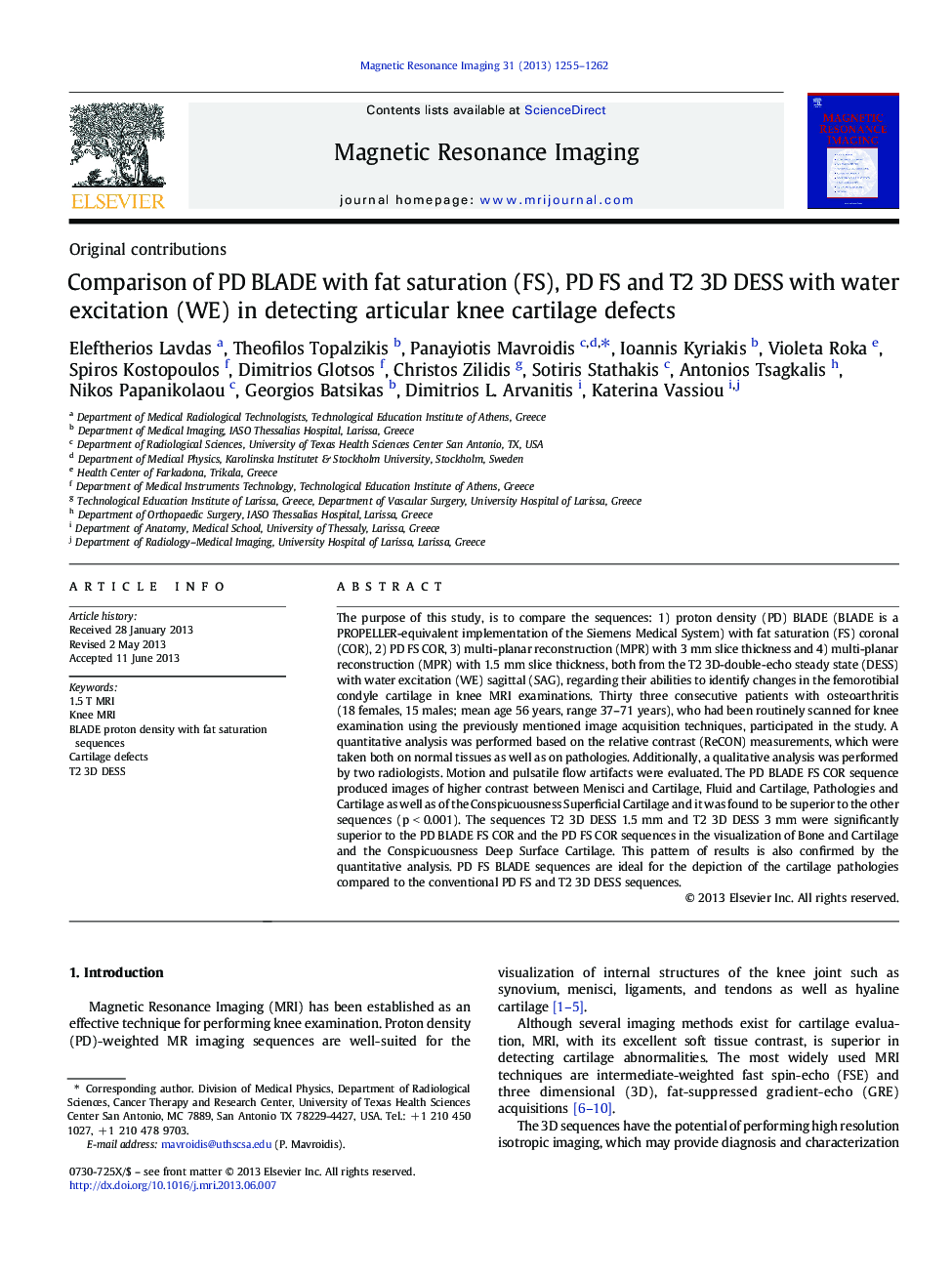| Article ID | Journal | Published Year | Pages | File Type |
|---|---|---|---|---|
| 1806361 | Magnetic Resonance Imaging | 2013 | 8 Pages |
The purpose of this study, is to compare the sequences: 1) proton density (PD) BLADE (BLADE is a PROPELLER-equivalent implementation of the Siemens Medical System) with fat saturation (FS) coronal (COR), 2) PD FS COR, 3) multi-planar reconstruction (MPR) with 3 mm slice thickness and 4) multi-planar reconstruction (MPR) with 1.5 mm slice thickness, both from the T2 3D-double-echo steady state (DESS) with water excitation (WE) sagittal (SAG), regarding their abilities to identify changes in the femorotibial condyle cartilage in knee MRI examinations. Thirty three consecutive patients with osteoarthritis (18 females, 15 males; mean age 56 years, range 37–71 years), who had been routinely scanned for knee examination using the previously mentioned image acquisition techniques, participated in the study. A quantitative analysis was performed based on the relative contrast (ReCON) measurements, which were taken both on normal tissues as well as on pathologies. Additionally, a qualitative analysis was performed by two radiologists. Motion and pulsatile flow artifacts were evaluated. The PD BLADE FS COR sequence produced images of higher contrast between Menisci and Cartilage, Fluid and Cartilage, Pathologies and Cartilage as well as of the Conspicuousness Superficial Cartilage and it was found to be superior to the other sequences (p < 0.001). The sequences T2 3D DESS 1.5 mm and T2 3D DESS 3 mm were significantly superior to the PD BLADE FS COR and the PD FS COR sequences in the visualization of Bone and Cartilage and the Conspicuousness Deep Surface Cartilage. This pattern of results is also confirmed by the quantitative analysis. PD FS BLADE sequences are ideal for the depiction of the cartilage pathologies compared to the conventional PD FS and T2 3D DESS sequences.
